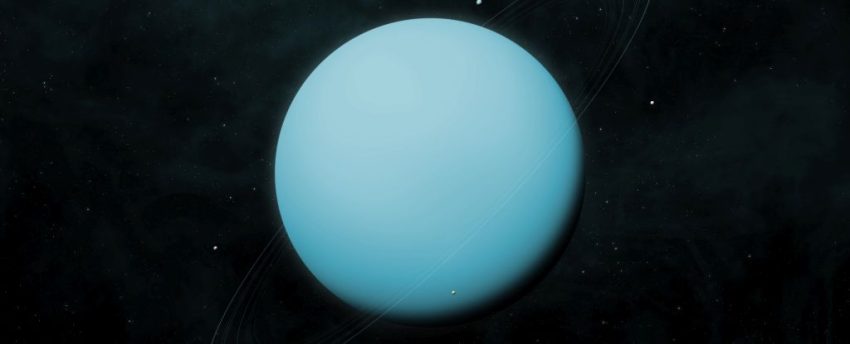New Insights into Uranus’s Heat Emission
Recent scientific studies have provided new insights into the heat emission of Uranus, revealing that this distant planet emits more heat than it receives from the Sun. This discovery has resolved a long-standing mystery that first emerged during the Voyager 2 flyby in 1986. At that time, observations suggested that Uranus was not emitting any excess heat, which made it an anomaly compared to other giant planets in the Solar System.
A team led by planetary scientist Xinyue Wang, who is now at the University of Michigan, Ann Arbor, after previously working at the University of Houston, found that Uranus emits approximately 12.5 percent more heat than it receives from the Sun. This finding aligns with research conducted earlier this year by a team led by planetary physicist Patrick Irwin of the University of Oxford in the UK. Their findings were published on arXiv and support the idea that Uranus is slowly losing residual heat from its formation.
This heat emission is significant because it helps scientists understand the origins and evolution of Uranus. According to Wang, “This means it’s still slowly losing leftover heat from its early history, a key piece of the puzzle that helps us understand its origins and how it has changed over time.” The study also highlights the importance of further exploration of Uranus, as it could provide valuable information about the formation of other giant planets.
Comparing Heat Emissions of Giant Planets
Jupiter, Saturn, and Neptune all emit significantly more heat than they receive from the Sun. Jupiter emits 113 percent more, Saturn 139 percent, and Neptune 162 percent. Since Neptune is farther from the Sun than Uranus, distance alone cannot explain why Uranus emits less heat. This discrepancy suggests that there may be unique internal processes or structural differences within Uranus that are not yet fully understood.
The researchers believe that these differences highlight the need for more detailed exploration of the outer planets in our Solar System. They argue that a future mission to Uranus would offer critical data to address unresolved questions about this enigmatic ice giant.
Implications for Future Space Exploration
The findings of Wang’s team and Irwin’s team suggest that Uranus may have a different internal structure or evolutionary history compared to other gas giants. This could lead to new theories about how planets form and evolve. Understanding these processes is essential for expanding our knowledge of planetary science and the broader universe.
The research has been published in Geophysical Research Letters, a reputable journal that focuses on advances in planetary science and related fields. The study emphasizes the importance of continued observation and exploration of Uranus, especially given the planet’s unique characteristics.
The Need for Further Investigation
Despite the progress made by recent studies, many questions about Uranus remain unanswered. Scientists are eager to investigate what makes Uranus different from other giant planets. A dedicated mission to Uranus could provide the necessary data to uncover these mysteries and enhance our understanding of the Solar System.
In summary, the recent analysis of Uranus’s heat emission has shed light on its internal processes and evolutionary history. While the findings align with previous research, they also raise new questions about the planet’s unique characteristics. As scientists continue to explore the outer reaches of our Solar System, the importance of studying Uranus becomes increasingly clear.
